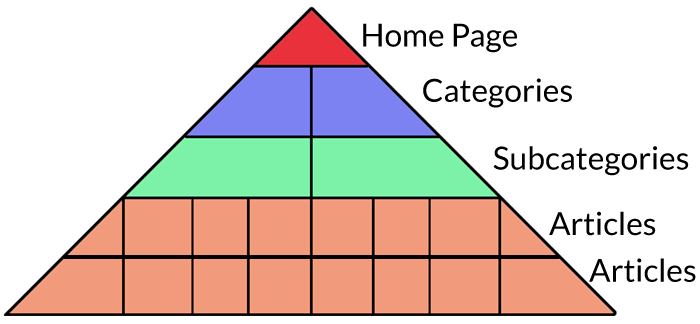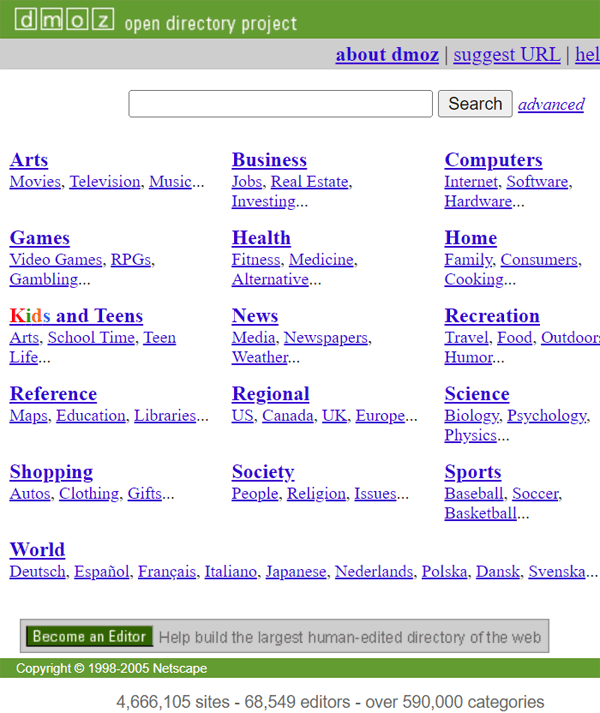In this article, titled “Why Google Recommends Hierarchical Site Structure For SEO,” Google’s Gary Illyes explains the benefits of using a hierarchical site structure for SEO. He also discusses when it’s acceptable to use a flat site structure. A flat site structure consists of every page having a link from the home page, while a hierarchical structure organizes the website by order of importance, with the home page representing the general topic and subsequent levels becoming more specific. Illyes explains that a hierarchical site structure allows for greater categorization and organization, which helps Google understand the different sections of a website. To learn more about the advantages of a hierarchical site structure and how it can benefit your SEO efforts, continue reading the article.

This image is property of www.searchenginejournal.com.
Flat Site Structure
Definition of a flat site structure
A flat site structure is characterized by every page being only one click away from the home page. It is called “flat” because the linking structure can be visualized as a flat structure, with all pages linked together on one level beneath the home page. This type of structure was popular during a time when link building involved obtaining links from web directories and reciprocal linking. The goal was to distribute PageRank across the website by creating a flat structure that allowed every page to have better ranking potential.
Reasons for using a flat site structure
The main reason for using a flat site structure was to maximize the distribution of PageRank across the website. This was believed to improve the ranking potential of individual pages. However, with Google’s dampening of the influence of PageRank as a ranking factor, the significance of using a flat file structure diminished. Flat site structures are still suitable for simple websites, but for larger sites, a hierarchical structure is recommended.
Hierarchical Site Structure
Definition of a hierarchical site structure
A hierarchical site structure is based on organizing content by order of importance. The top level represents the most general topic of the website, with subsequent levels becoming more specific or granular. This organization allows for the creation of thematic categories that fit into the overall topic. Each level contains articles or pages that share the theme of its respective category. The hierarchical structure helps search engines understand the organization of the site and the relationship between different sections.
Advantages of a hierarchical site structure
One of the advantages of a hierarchical site structure is the ability to treat different sections of the website differently. This means that search engines can crawl and index different sections at different rates. For example, having a separate “/news/” section for news content and an “/archives/” section for older content allows search engines to crawl the “/news/” section faster. This level of control is beneficial for larger websites that have distinct sections with varying importance or freshness.

This image is property of www.searchenginejournal.com.
Taxonomic Site Structure
Definition of a taxonomic site structure
A taxonomic site structure is another term used to describe the hierarchical site structure. It refers to the organization of content into hierarchical groups or categories. Just like a hierarchical structure, the home page represents the main topic of the website, and subsequent levels delve into more specific categories and web pages.
Comparison to hierarchical site structure
The taxonomic site structure is essentially the same as the hierarchical site structure, but with a different name. In the early 2000s, web directories were often organized in a taxonomical manner, with the home page representing the main topic and subsequent levels representing progressively specific categories and web pages. Both terms refer to the same hierarchical organization by categories and topics.
Pyramid Site Structure
Definition of a pyramid site structure
The pyramid site structure is another term used to describe the hierarchical site structure. In this visualization, the home page represents the top of the pyramid, and each subsequent level represents more specific categories and web pages. Just like the taxonomic and hierarchical structures, the pyramid structure follows the same hierarchical organization based on categories and topics.
Comparison to hierarchical site structure
The pyramid site structure is essentially the same as the hierarchical and taxonomic structures, but with a different visualization. It highlights the hierarchical organization where the top represents the general topic and subsequent levels become progressively more specific. The different names used for the hierarchical structure emphasize its effective organization of content.

This image is property of www.searchenginejournal.com.
Silo Site Structure
Definition of a silo site structure
The silo site structure is yet another visualization of the hierarchical organization of a website. Similar to the previous structures, it features a top-level representing the main topic and subsequent levels representing more specific categories and web pages. The silo structure visually represents the hierarchical manner of organizing a website by categories and topics.
Comparison to hierarchical site structure
The silo structure is an alternative visualization of the hierarchical site structure. It adheres to the same principles of organizing content by categories and topics, with the top level being the most general and subsequent levels becoming progressively more specific. Despite the different visual representation, the underlying hierarchical organization remains the same.
Gary Illyes’ Explanation
Gary Illyes’ opinion on site structure choice
According to Gary Illyes of Google, the choice of site structure largely depends on the size of the website. For larger sites, he recommends a hierarchical structure. This allows for the implementation of different strategies in specific sections of the website, and search engines can also treat different sections differently, especially during crawling. For example, having separate sections for news content and archives would enable search engines to crawl the news section faster compared to other parts of the website.
Recommendation for large sites
Gary Illyes suggests using a hierarchical site structure for larger websites. This structure offers flexibility in terms of implementing different strategies in various sections of the site. It also allows search engines to understand and crawl different sections at different rates. This level of control is particularly valuable for larger sites with multiple sections that have varying importance or frequently updated content.

This image is property of www.searchenginejournal.com.
Advantages of Hierarchical Site Structure
Ability to treat different sections differently
One of the advantages of a hierarchical site structure is the ability to treat different sections of a website differently. This means that you can implement specific strategies or optimizations on individual sections to better align with their specific goals. For example, a news section can be optimized for relevancy and freshness, while an archives section can be organized for historical content or reference purposes. This flexibility allows for better site management and targeting of user intent.
Facilitation of search engine crawling
Another advantage of a hierarchical site structure is its facilitation of search engine crawling. With a well-organized hierarchy, search engine bots can easily navigate and understand the relationship between different sections and pages. This can improve the efficiency of crawling, indexing, and ultimately, the visibility of the website in search engine results. A clear and intuitive hierarchy enables search engines to discover and index relevant content more effectively.
Four Names for Hierarchical Site Structure
Various names for hierarchical site structure
The hierarchical site structure is known by several names, including the taxonomic structure, the pyramid structure, and the silo structure. Despite these different names, all of them describe the same concept of organizing content based on a hierarchy of categories and topics. The various names are a testament to the effectiveness and versatility of this structure in facilitating website organization and search engine optimization.
Implications of multiple names
The existence of multiple names for the hierarchical site structure highlights the widespread recognition and adoption of this approach. Different individuals or communities may prefer different terms based on their understanding and perspective. However, regardless of the terminology used, the underlying principles and benefits of hierarchical organization remain consistent. This reinforces the idea that a hierarchical structure is a recommended choice for effective website management and SEO.

This image is property of www.searchenginejournal.com.
Google’s Perspective on Hierarchical Site Structure
Google’s endorsement of hierarchical site structure for SEO
Google, as the leading search engine, endorses the use of hierarchical site structure for SEO. It recognizes the benefits of organizing content hierarchically, as it enables easier crawling, indexing, and understanding of the website’s structure and content. By implementing a clear and logical hierarchy, website owners can improve their chances of achieving higher visibility and rankings in search engine results pages.
Reasons for Google’s recommendation
Google’s recommendation for hierarchical site structure is based on its goal to provide the best and most relevant search results to users. A hierarchical organization helps Google’s algorithms understand the relationships between different sections and pages within a website. This understanding allows for more accurate indexing and retrieval of relevant content. Ultimately, the goal is to enhance the user experience by delivering the most appropriate and useful results for their search queries.
Conclusion
Summary of advantages of hierarchical site structure
In summary, a hierarchical site structure offers several advantages for website management and SEO. It allows for the treatment of different sections differently, enabling targeted optimizations and strategies. Additionally, it facilitates search engine crawling by providing a clear and intuitive organization of content. Google recognizes the benefits of this structure and recommends its implementation for optimal SEO performance.
Final thoughts on Google’s recommendation
Following Google’s recommendation of a hierarchical site structure is a valuable strategy for website owners and SEO practitioners. By understanding the principles and benefits of a hierarchical organization, one can optimize their website’s structure and content to improve search engine visibility and user experience. Implementing a clear and logical hierarchy helps search engines understand the website’s topical relevance and enhances the chances of ranking higher in search results.
